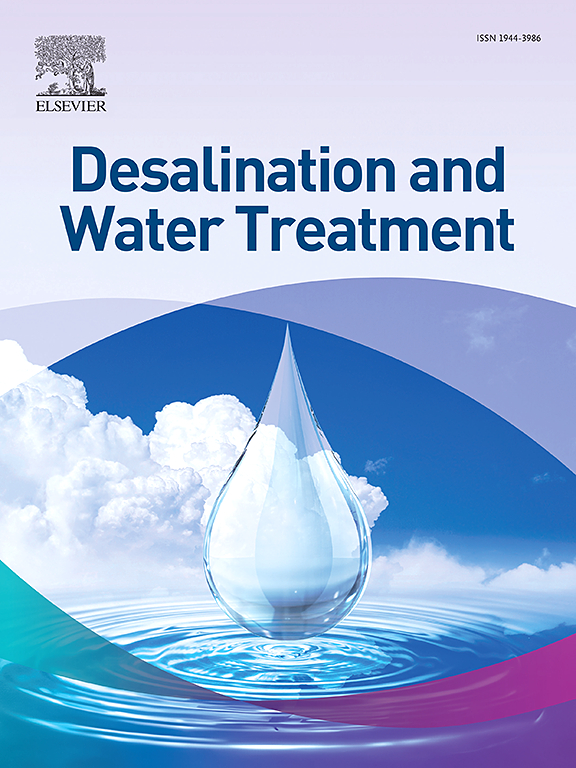巴塞罗那,三年的咸淡水淡化经验,使用EDR提高水质。新的运维程序,减少低价值的工作,提高生产力
IF 1
4区 工程技术
Q4 ENGINEERING, CHEMICAL
引用次数: 11
摘要
巴塞罗那及其周边地区450万居民的主要水源是略布列加特河和特尔河流域的地表水。由于自然过程和人为过程,略布列加特河水显示出与盐度相关的参数(Na+, K+, Cl−和Br−)的重要浓度。此外,许多问题与城市和工业污水引起的微污染物和微生物水平的增加有关。这些问题造成了许多过程的中断,其中一些持续了好几个小时。因此,高含量的溴(0.5至1.2毫克/升)、天然有机物和温度(T)在氯化后产生高浓度的三卤甲烷(thm),显示出高溴化特征。为了最大限度地减少THMs问题,2009年,自来水公司Aigues Ter-Llobregat (ATLL)在llobregat - abrela饮用水处理厂(DWTP)引入了一项基于膜工艺的新技术:一种新的电渗析…本文章由计算机程序翻译,如有差异,请以英文原文为准。
Barcelona, three years of experience in brackish water desalination using EDR to improve quality. New O&M procedures to reduce low-value work and increase productivity
Abstract The 4.5 million inhabitants of Barcelona and the surrounding area are mainly supplied with surface water from the Llobregat and Ter river basins. The Llobregat river water shows important concentrations of parameters associated with salinity (Na+, K+, Cl−, and Br−), due to both natural and anthropogenic processes. Furthermore, many problems are associated with the increase in micropollutant and microbiological levels due to both urban and industrial sewage. These problems produce many interruptions of the process, some of them lasting many hours. As a consequence, the high levels of bromide (ranging between 0.5 and 1.2 mg/L), natural organic matter and temperature (T) produce high concentrations of trihalomethanes (THMs) after chlorination, showing a high brominated profile. To minimize the THMs problem, in 2009, the water utility Aigues Ter-Llobregat (ATLL) introduced a new technology based on a membrane process in the Llobregat-Abrera Drinking Water Treatment Plant (DWTP): a new Electrodialysis...
求助全文
通过发布文献求助,成功后即可免费获取论文全文。
去求助
来源期刊

Desalination and Water Treatment
工程技术-工程:化工
CiteScore
2.20
自引率
9.10%
发文量
0
审稿时长
5.3 months
期刊介绍:
The journal is dedicated to research and application of desalination technology, environment and energy considerations, integrated water management, water reuse, wastewater and related topics.
 求助内容:
求助内容: 应助结果提醒方式:
应助结果提醒方式:


